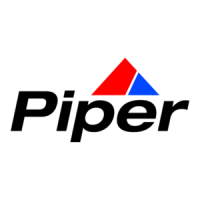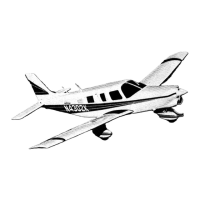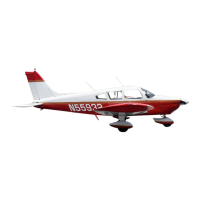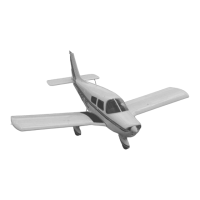LANCE
II SERVICE
MANUAL
2-8b. IDENTIFICATION
OF FLUID LINES.
(Refer to Figure
2-4b.) Fluid lines
in aircraft are often
identified by markers
made up of color
codes, words or geometric
symbols. These markers
identify each line's
function,
content and primary
hazard as well as direction
of fluid flow. In
most instances fluid lines
are marked
with 1-inch
tape or decals. Paint is
used on lines in engine
compartments where
there is a possibility of
tapes,
decals, or tags being
drawn into the engine
induction system. Certain
lines may be further
identified as to
specific
function
within a system.
For example:
DRAIN,
VENT, PRESSURE
or
RETURN.
Lines conveying
fuel may be marked FLAM; lines containing
toxic materials are marked TOXIC in place
of FLAM. Lines
containing physically
dangerous materials
such as oxygen, nitrogen
or freon are marked
PHDAN.
The aircraft and engine
manufacturers
are responsible for the
original installation
of identification
markers,
but the aviation mechanic
is responsible
for their replacement
when it becomes
necessary.
Generally, tapes and decals are
placed on both ends of a line and at least
once in each compartment
through
which the line runs.
In addition, identification
markers are placed
immediately adjacent
to each valve.
regulator, filter or other
accessory within a
line. Where paint or tags
are used, location
requirements are the
same as for tapes or decals.
2-8c. INSTALLATION
OF FLEXIBLE
HOSE ASSEMBLIES.
a. Flexible
hose must not be
twisted on installation.
A flexible hose which
is installed with a
twist may
have
a reduced service
life and may cause
a loosening of the
fittings to which
it is attached.
b. Never exceed the
minimum bend radius and avoid tight bends
in flexible hose assemblies (Refer to
AC 43: 13-1, Chapter 10).
c. Never stretch a hose tight between
two fittings as this may result in overstressing
and eventual failure.
The
length of the hose
should be sufficiently
long to
provide 5 to 8 percent
slack.
Added:
10/3/80
HANDLING AND SERVICING
1B7

